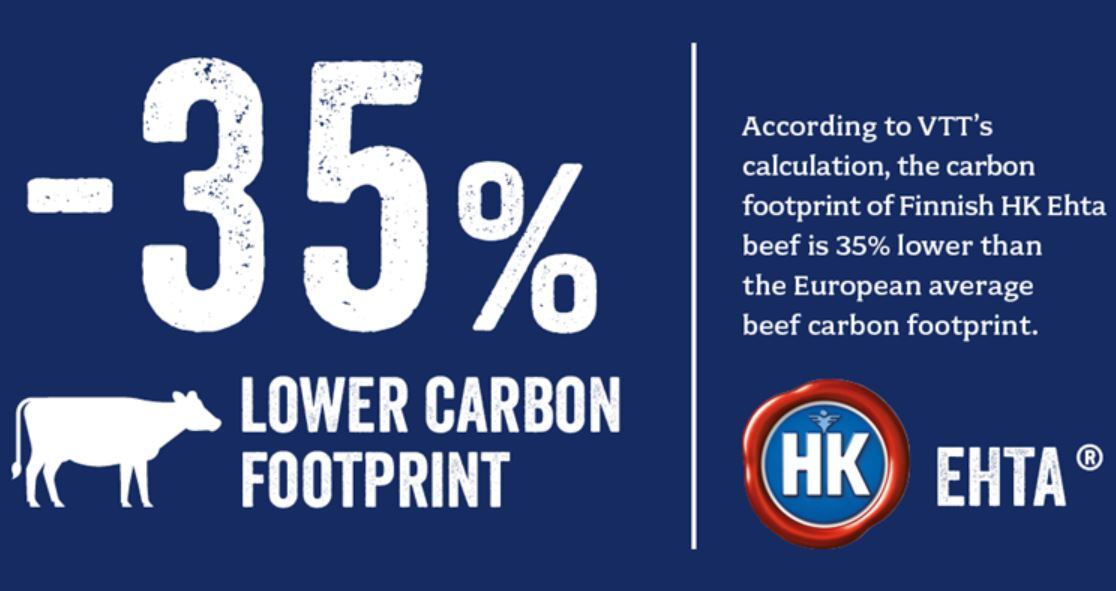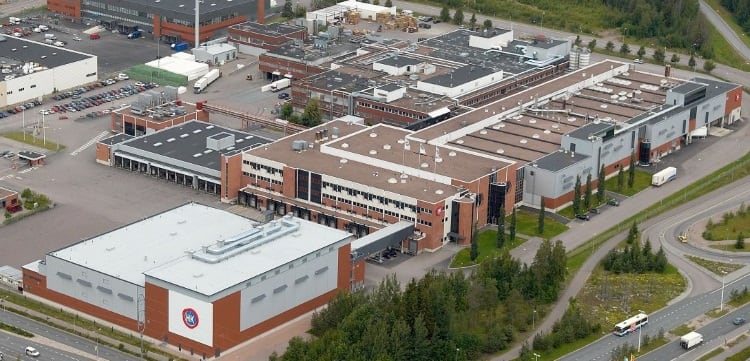The calculation was based on data provided by four Finnish HK Ehta contract farmers, based on international IPCC guidelines and ISO standardised life cycle assessment.
Environmental impact
The results show the carbon footprint of Finnish HK Ehta beef is 8.2 kg CO2e per kilo of animal’s live weight*. The European average carbon footprint of beef is 12.6 kg CO2e per kilo of live weight**.
Mikko Järvinen, VP Red Meat Business, HKScan Finland, said on a European scale, the carbon footprint of Finnish HK Ehta beef is small and we continue our work to reduce the climate impact of meat production together with our farmers.
HKScan has worked closely with contract farmers for over 100 years. Internationally small carbon footprint of HKScan’s Finnish HK Ehta beef is an indication of long-term work for the environment.
The carbon footprint includes the climate impacts related to the animal and its farming, such as feed, manure system, energy, litter, digestion and transportation.
In beef production, the most significant emissions are caused by feed and digestion of cattle, totalling about 70% of carbon footprints. The Finnish cattle mainly eat grass feed, which reduces the climate impacts of meat.
“Our goal is carbon-neutral meat production. To achieve this goal, we need to have a thorough understanding of the environmental impact of meat production, and only then, we will be able to systematically reduce greenhouse gas emissions,” said Järvinen.
Agrofood Ecosystem
According to Ulf Jahnsson, VP Strategic development primary production, HKScan, calculating the carbon footprint is a complex process, in which it succeeded together with VTT and its contract farmers.
In the Agrofood Ecosystem model developed by HKScan, the sustainability of meat production is further developed with the help of the latest research data and data collected from pilot farms.
Agrofood Ecosystem increases the transparency of food production and provides tools to reduce environmental impacts and to improve productivity.
“This summer, we are exploring the ability of grass to bind carbon to better understand the positive environmental impacts of agriculture. Improving the carbon-sequestration and productivity of fields are ways to reduce the carbon footprint of beef,” added Jahnsson.
* The calculation is based on the latest ISO-standardised methods and IPCC’s calculation guidelines, and the results are given in mass allocated kg CO2e/kg live weight. The calculation takes into account the carbon footprint of beef production from the field to the plant gate. In addition to carbon dioxide, the carbon footprint contains methane and nitrous oxide converted to carbon dioxide equivalents.
** The European average has been calculated from the VVT’s study commissioned by HKScan. The study included 19 international studies on the carbon footprint of beef from 2015 to 2018, covering several different production methods.




